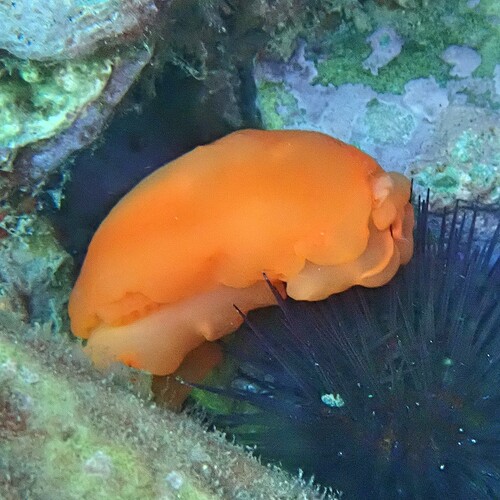Florida predatory stink bug taking a drink.
So many mushrooms and butterflies… and other arthropods and even flowers. But so far, no fruits. So here we are: Twoleaf Nightshade
I’ve been waiting for this one! A lot of beetles in the family Erotylidae have orange bands on their elytra. Since there’s so many, I’ll just add the link to the explore page for the family: https://www.inaturalist.org/observations?taxon_id=82103&view=species
How about… oranges?
Yoooo. That wasp is awesome! I LOVE hymenopterans.
So do I! Glad you enjoyed it. (-:
Here are a few that meet the Orange topic in my Butterfly photo file:
Two-tailed Swallowtail Caterpillar and Butterfly
Gulf Fritillary
Monarch
Melissa Blue
Purplish Copper
I think that nobody mentioned orange leaves in autumn!
Here is the most orange that I saw on my trip to Canada, a Mountain Maple
https://www.inaturalist.org/observations/186679596
The most recent orange thing that I saw was this Field Marigold growing close to a road
https://www.inaturalist.org/observations/263870945
And another cool and very orange one, this endemism to the Iberian Peninsula, the Iberian Sooty Copper
https://www.inaturalist.org/observations/161768374
Beautiful!
This Lonicera’s orange fruit caught my eye
Lonicera (Honeysuckles)
Sminthurinus henshawi f. aureus (Globular springtail) Not a fruit, but, interestingly different, I think: “Springtails (class Collembola) form the largest of the three lineages of modern hexapods that are no longer considered insects.”
Cuscuta (Dodders) The orange vine twining around the Monarda is a parasitic plant
Rhagidiidae “a family of prostig mites in the order Trombidiformes.”
Hymenoscyphus (ok, yes, another fungus, but its fruiting body is so cute…) Found inside an acorn cap
and back to plant fruit…
Solanum dulcamara (Bittersweet Nightshade)
https://inaturalist-open-data.s3.amazonaws.com/photos/444561962/medium.jpg
https://inaturalist-open-data.s3.amazonaws.com/photos/466789176/original.png
https://inaturalist-open-data.s3.amazonaws.com/photos/430462486/medium.jpg
https://inaturalist-open-data.s3.amazonaws.com/photos/437674176/medium.jpg
https://inaturalist-open-data.s3.amazonaws.com/photos/466838666/medium.png
https://inaturalist-open-data.s3.amazonaws.com/photos/448143750/medium.jpg
https://inaturalist-open-data.s3.amazonaws.com/photos/445057739/medium.jpg
https://inaturalist-open-data.s3.amazonaws.com/photos/438224410/medium.jpg
https://inaturalist-open-data.s3.amazonaws.com/photos/431952674/medium.jpg
Manupecten pesfelis (Linnaeus, 1758)
https://www.molluscabase.org/aphia.php?p=taxdetails&id=225645
Callistoctopus macropus (Risso, 1826)
https://www.marinespecies.org/aphia.php?p=taxdetails&id=534558
Monoplex parthenopeus (Salis Marschlins, 1793)
https://www.molluscabase.org/aphia.php?p=taxdetails&id=476531
In responding to this thread I’m realizing that I see orange more often then I noticed. There’s the Ailanthus webworm moth, isabella tiger moth caterpillars, this mystery leafhopper, a puzzling amber-colored caterpillar… So many to choose from. That being said, I’ve grown quite fond of Pearl Crescents.
OMG. Those octopus are absolutely breath taking! C. macropus in particular looks beyond spectacular. Yet another reason to adore molluscs!
This shot is wonderful. The detail as well as the angle are stunning.
Some animals found while snorkelling:
Berthellina edwardsii - sea slug
https://www.inaturalist.org/observations/180525956
Astroides calycularis - Star coral
https://www.inaturalist.org/observations/178674299
Cotylorhiza tuberculata - fried egg jelly
https://www.inaturalist.org/observations/178674308
(It’s time that the snorkelling season starts - but at the moment we have constant rain and 15°C)


































